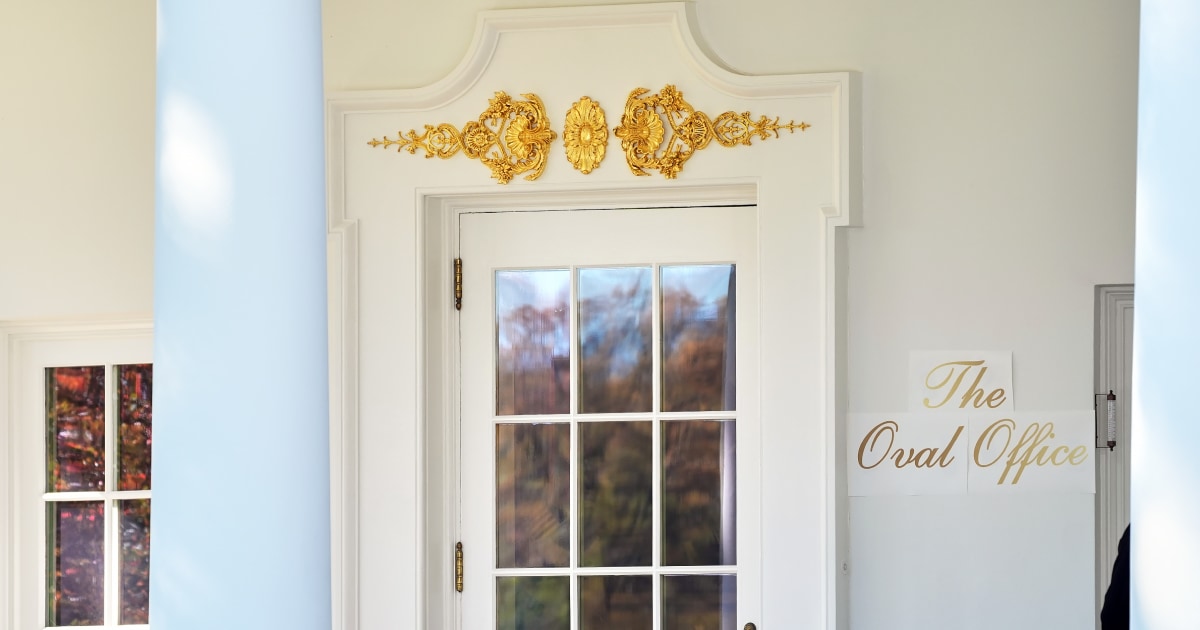Trump's maximalist design preferences are legendary. His penthouse apartment in Trump Tower is a rococo disaster, gold as far as the eye can see. By the time he bought Mar-a-Lago in 1986, the mansion was already considered, in the words of the Chicago Tribune, “a monument to the swagger of the Roaring '20s.” His love of gold and marble was at least partially influenced by his first wife Ivanka, who served as his chief interior designer in the 1980s. The power couple at the time was closely involved in the details of his then-growing portfolio. A 1984 New York Times piece, published as Trump prepared to open the first of his doomed casinos in Atlantic City, said the two made “thousands of decisions, from choosing all the wallpaper, curtains and trim for the bouncers' uniforms to menus and doorknobs.”
The decades have not diminished this trend, even as more pressing matters should draw its attention. The Wall Street Journal reported in April that Trump flew in his “gold man,” who had worked at Mar-a-Lago, to install the gold trim that now surrounds the Oval Office. And based on renderings he's shown journalists, we can only assume the proposed White House ballroom will receive similar treatment. White House press secretary Karoline Leavitt told reporters last month that her boss's “heart and mind are constantly thinking about how to improve things here on the White House grounds. But at this moment, of course, the ballroom is the president's top priority.”
The president's gold-adorned preferences have long been a punchline for others. In 1990, the Baltimore Sun reported that a new hotel line in the region would offer “luxury of a very different kind than the Donald Trump model.” The chain will “offer luxury through conclusions,” said the hotel’s general manager. “This is achieved by focusing on absolute comfort rather than gold fittings and lots of faux marble in the bathrooms.”
However, maintaining this fiction is becoming increasingly difficult as low-income Americans are particularly affected by Trump's policies.
But that hasn't stopped Trump from bringing his vision of luxury to the masses. When asked how he moved the extremely expensive Trump Tower condos in 1984, he simply told the Times: “You're selling them a fantasy.” It's a mantra recaptured in his (ghost-written) “Art of the Deal” and in his second act as a pop culture phenomenon as host of “The Apprentice.” In all of his ventures, including the presidency itself, Trump has tried to sell potential supporters on the dream that they could be as rich as he is if they would only follow his lead. Northwestern marketing professor Tim Calkins told the Washington Post shortly after the 2016 election that Trump “has benefited from the power of the Trump brand, with which people associate and aspire to luxury, wealth and celebrity.”
However, maintaining this fiction is becoming increasingly difficult as low-income Americans are particularly affected by Trump's policies. While these voters supported Trump in both his Republican primary and his general election victory last year, they have since lost out while the rich have prospered. As the lockdown continued, he shifted blame to Democrats but did little to reassure his supporters, who hoped, despite all evidence to the contrary, that he would not cut their federal benefits.
The gap between Trump's fantasy and economic reality is already evident in surveys. Last month, a poll from The Economist/YouGov found that only 35% of Americans making less than $50,000 a year approved of his job performance, while 59% disapproved. That's a significant change from their September poll, where he had a 40% approval rating and a 55% disapproval rating among that demographic. Similarly, a recent CNN/SSRS poll released Monday found that 69% of low-income earners disapprove of Trump's performance while only 31% praise his work.
As of Thursday morning, the White House had not said whether the signage outside the Oval Office will remain permanent — but given the new “Presidential Wall of Fame” that Trump has installed just steps away with similar inscription, the chances are good. The remodeling of the building in his own image reflects his desire to change the country according to his own selfish whims. But while the sticky signs and metallic sheen can be easily removed, the pain currently felt by needy countries as the president dithers over marble tiles will be much harder to heal.
